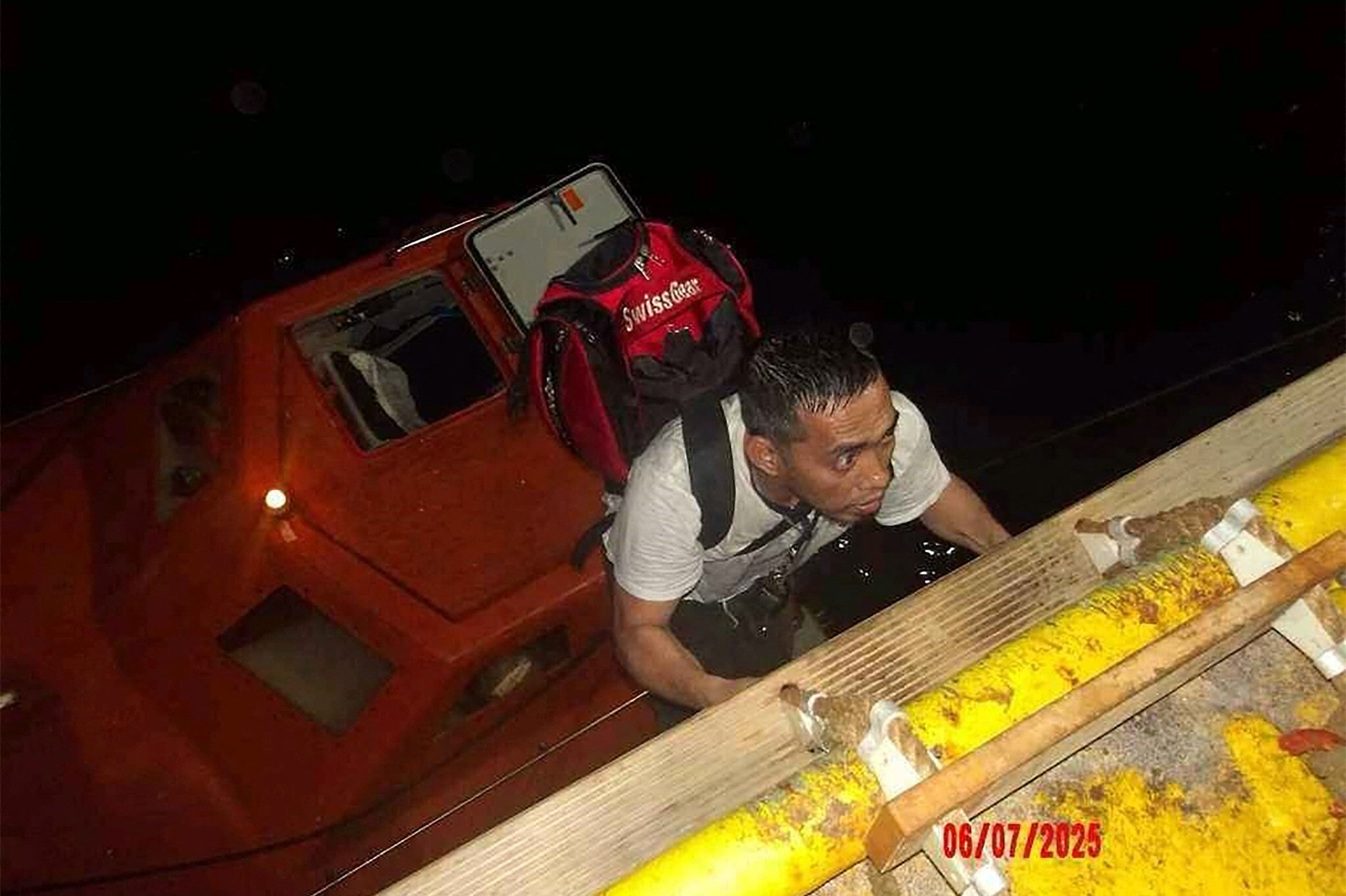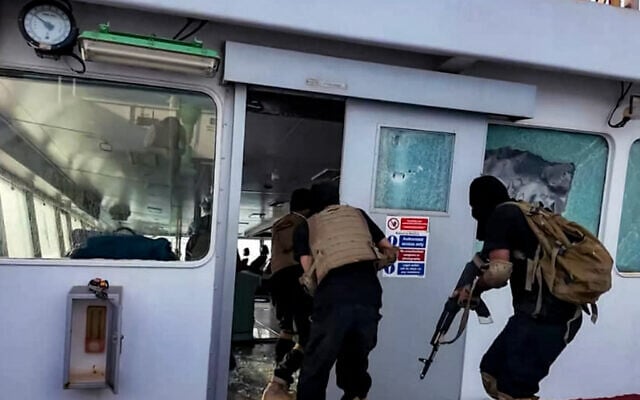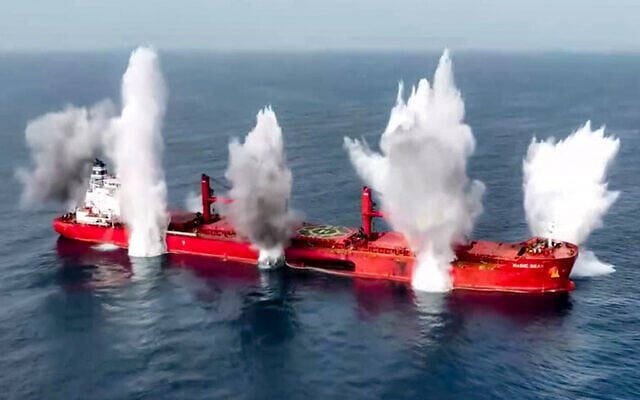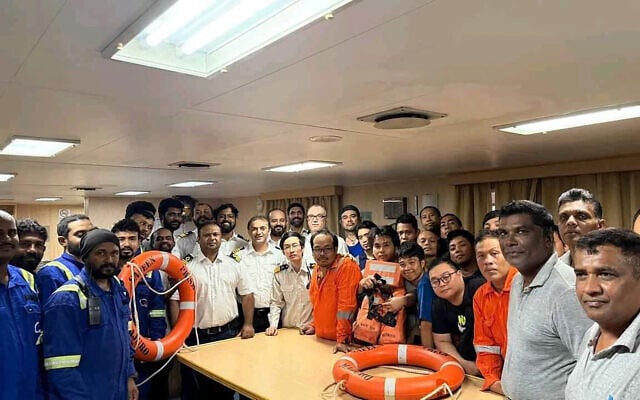



MANILA, Philippines — Filipino seafarer Cocoy was off duty and resting in his cabin when the captain’s voice boomed over the intercom of the cargo ship: “We are under attack.”
The 38-year-old realized what sounded like a “knock” from inside the vessel was gunfire being exchanged by ship security and Houthi rebels swarming the ship in small boats.
The July 6 assault on the Greek-owned Magic Seas broke a months-long lull in attacks by Yemen’s Houthi rebels on Red Sea shipping, which began after Hamas started the Gaza war with its October 7, 2023, massacre in southern Israel.
Crew members scrambled to reach the “muster station” at the center of the ship, considered the safest place should a projectile strike the vessel.
“There was panic, but we knew we had to move. It’s like we were on autopilot,” said Cocoy, who asked to be referred to by his nickname as he undergoes a debriefing.
“[The crew] were in a daze, but they were all rushing to do their assigned jobs for our safety protocol… maybe I looked dazed too,” he told AFP.
“There were speedboats from the right, left, and back of our ship,” he said, relaying what the ship’s security team had told him. “There was also a bigger boat with around 15 crew who were attempting to board our ship, but luckily, our armed guards were able to stop them.”
Of the 22 aboard the ship, 17 were Filipino.
The group huddled inside the muster station for nearly five hours as the ship’s three armed Sri Lankan security guards tried to stave off the attack.
“I lost count of how many hits we took,” he told AFP of Houthi projectiles.
A Houthi spokesman would later claim that five ballistic and cruise missiles and three drones had been employed in the attack. One would breach the hull.
“The flooding had started, so we decided to abandon the ship,” Cocoy said. “We deployed our lifeboat, all 22 of us, and left our main vessel.”
Filipino sailors make up as much as 30 percent of the world’s commercial shipping force. The nearly $7 billion they sent home in 2023 accounted for about a fifth of remittances sent to the archipelago nation.
While a seafarer for more than 15 years, it was Cocoy’s first passage through the Red Sea, and what he called a case of “really bad timing.”
“During the gunfight, the faces of my wife and child flashed before my eyes. I kept thinking… will they survive without me?” he said. “I thought I was going to die.”
After abandoning ship, Cocoy and his shipmates spent three hours floating in the Red Sea before being picked up by a Panama-flagged container ship.
“They were the longest hours of my life,” he said.
The Magic Seas was no longer within their sight as it sank beneath the waves.
A day after Cocoy’s ordeal, another vessel, crewed largely by Filipino sailors, the Eternity C, was attacked and sunk.
Ten of those aboard were rescued. Another 15 are dead or missing.
It was the deadliest such assault since three people were killed in a missile attack on another ship in March last year.
On Wednesday night, eight Filipinos rescued from the Eternity C landed at Manila’s international airport.
The Iran-backed Houthis said last week they had “rescued” an unspecified number of the Eternity C’s crew and taken them to a safe location, prompting charges of kidnapping by the US government.
Maritime news journal Lloyd’s List reported six Filipino seafarers as “believed taken hostage.”
The Philippine government has so far offered no information about the possibility of either hostages or negotiations.
“I feel terrified for the [missing] Eternity C crew,” Cocoy told AFP. “We were just lucky, because all of us survived… I pray that many of their crew can still be located alive.”
Cocoy, who is plagued by nightmares of the attack, said he is unsure if he will return to the sea.
“What happened to us was not normal,” he said, urging shipowners to find routes that avoid the Red Sea. “It’s something that no one should ever experience.”
The Houthis — whose slogan calls for “Death to America, Death to Israel, [and] a Curse on the Jews” — began attacking Israel and maritime traffic in November 2023, a month after the October 7 Hamas massacre.
The Houthis held their fire when a ceasefire was reached between Israel and Hamas in January 2025. They later became the target of an intense weeks-long campaign of airstrikes ordered by US President Donald Trump before he declared a ceasefire had been reached with the rebels.
By that point, the Houthis targeted more than 100 ships with missiles and drones. In their campaign so far, the Houthis have sunk four vessels and killed at least eight mariners.
The Houthis also fired over 40 ballistic missiles and dozens of attack drones and cruise missiles at Israel, including one that killed a civilian and wounded several others in Tel Aviv in July, prompting Israel’s first strike in Yemen.
Since March 18this year, when the IDF resumed its offensive against Hamas in the Gaza Strip, the Houthis in Yemen have launched 61 ballistic missiles and at least 15 drones at Israel. Several of the missiles have fallen short.




